RSPB Budby South Forest
Budby South Forest forms the untamed half of the Sherwood Forest National Nature Reserve and is an amazing landscape in its own right.
Found immediately north of RSPB Sherwood Forest, it is one of the largest contiguous blocks of heathland remaining in the East Midlands and a designated Site of Special Scientific Interest, particularly for its variety of invertebrate species.
It sits in the heart of a historic landscape and is home to lots of vulnerable and specialist wildlife.
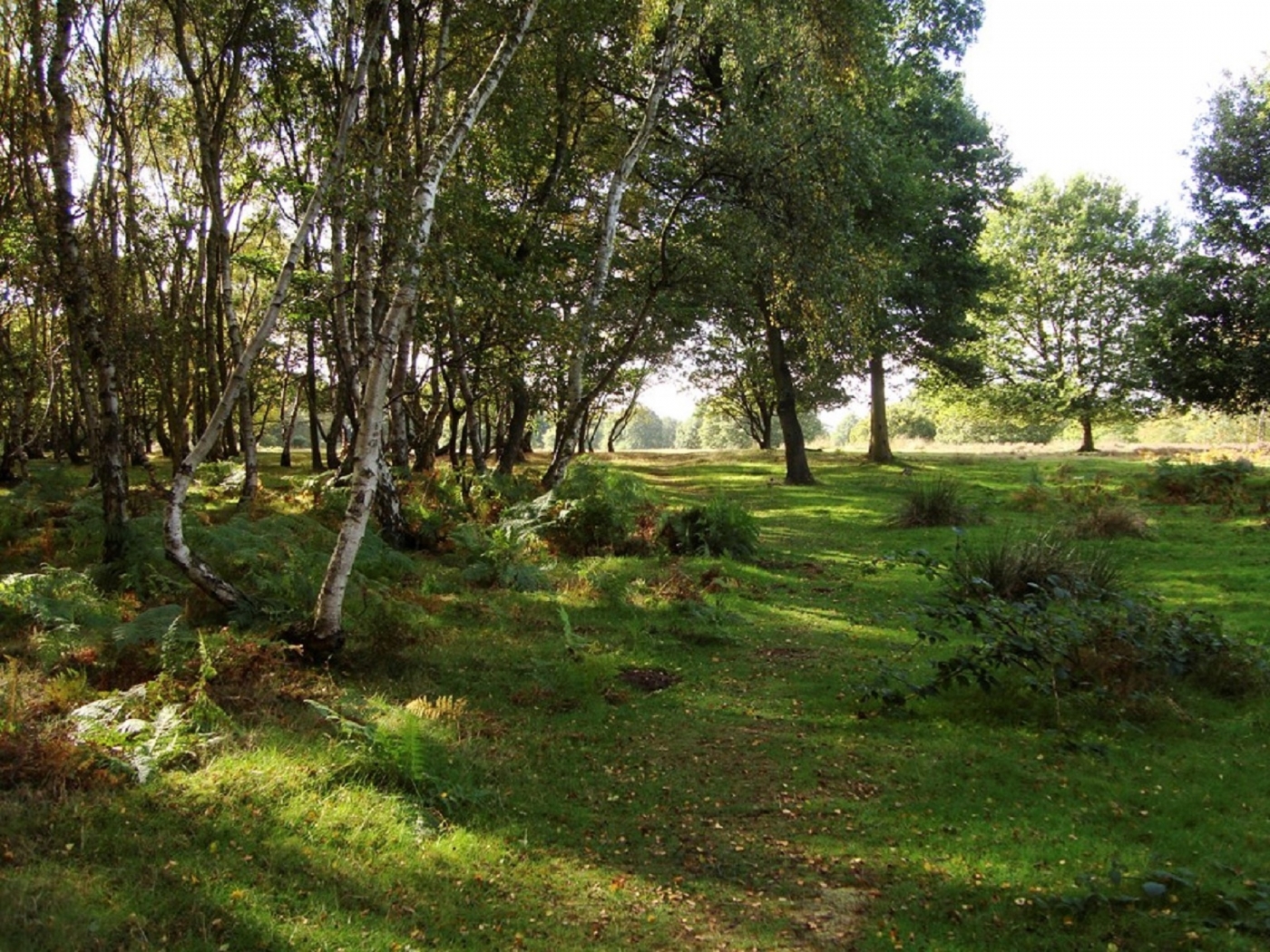
Wildlife at Budby
Many different species thrive at Budby South Forest, notably its nationally important invertebrate populations, which include black oil beetles, green tiger beetles, Ashy mining bees and Mimesa bicolour wasps.
Looking down, you may have noticed that the bare ground works have led to a boom in little holes appearing along the paths.
That’s because mining bees, beetles, spider hunting solitary wasps and ruby tailed wasps have all made use of the Sherwood sandstone surfaces.
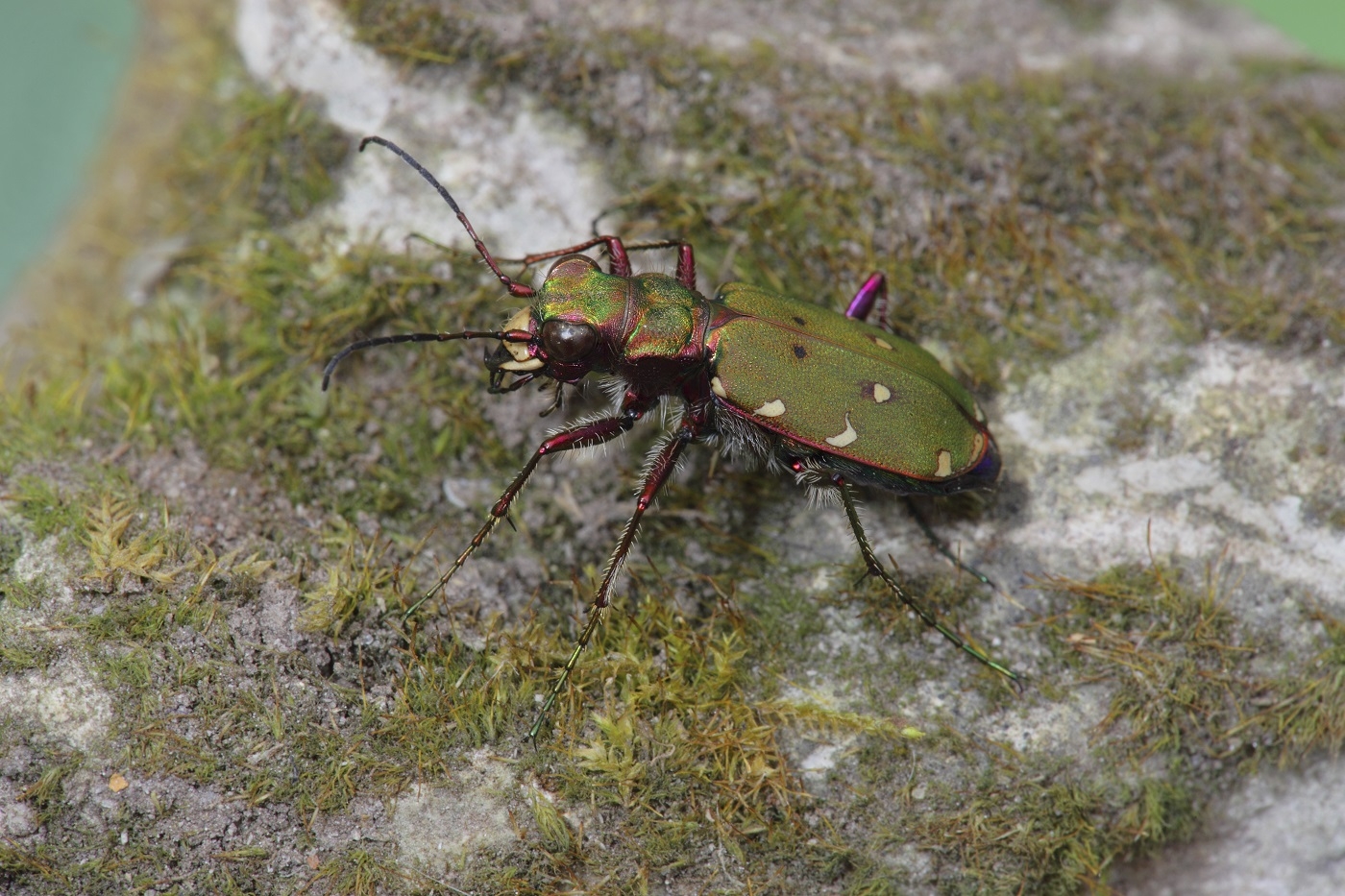
Green Tiger Beetle
Ground-nesting birds such as woodlarks and nightjars, and species such as tree pipits, stonechat, long-eared owls and lesser spotted woodpeckers have been seen and heard.
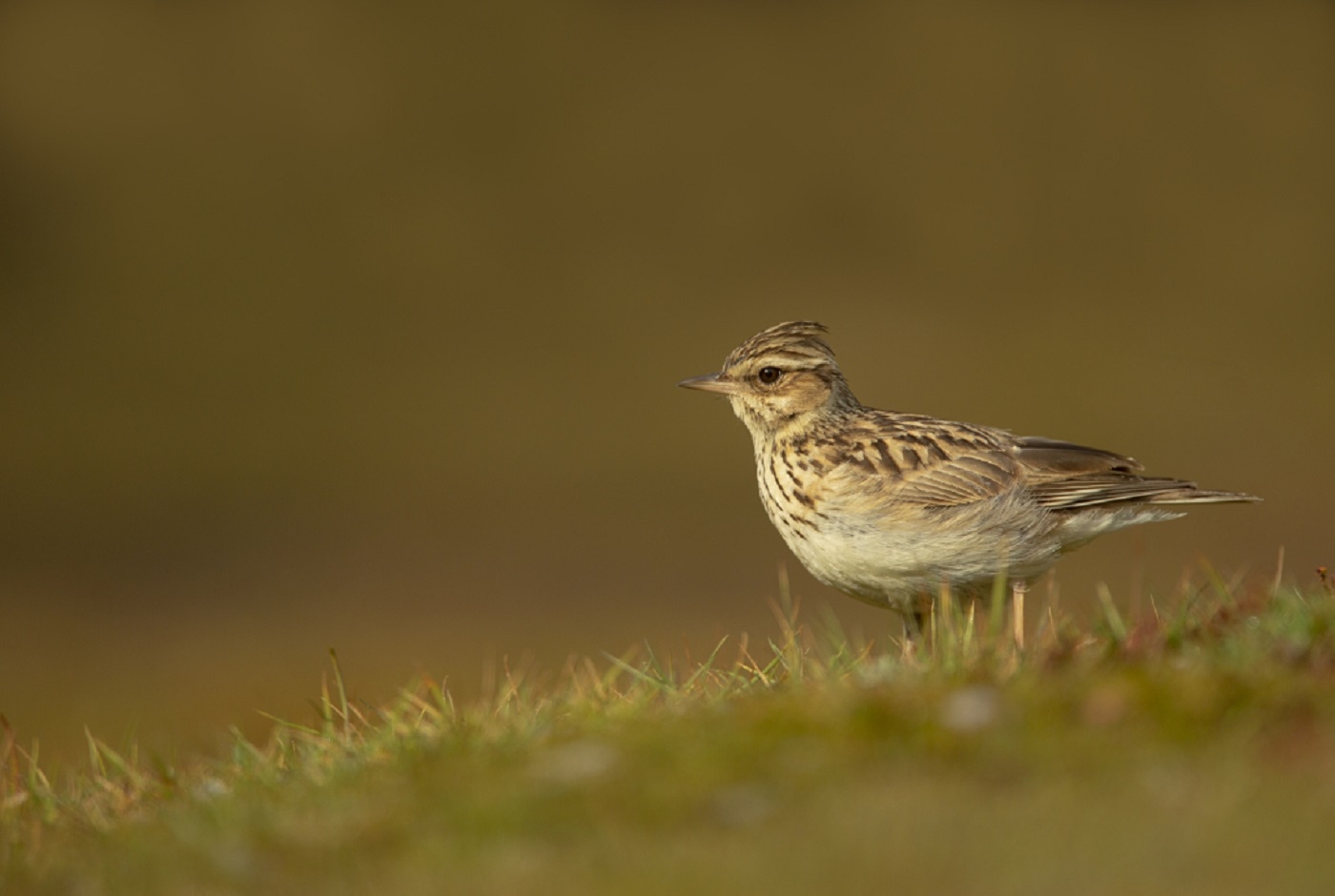
Woodlark
It’s also been home to a variety of bat species, such as Liesler’s bats, noctules and common and soprano pipistrelles, and dazzling butterflies like the Purple Emperor.
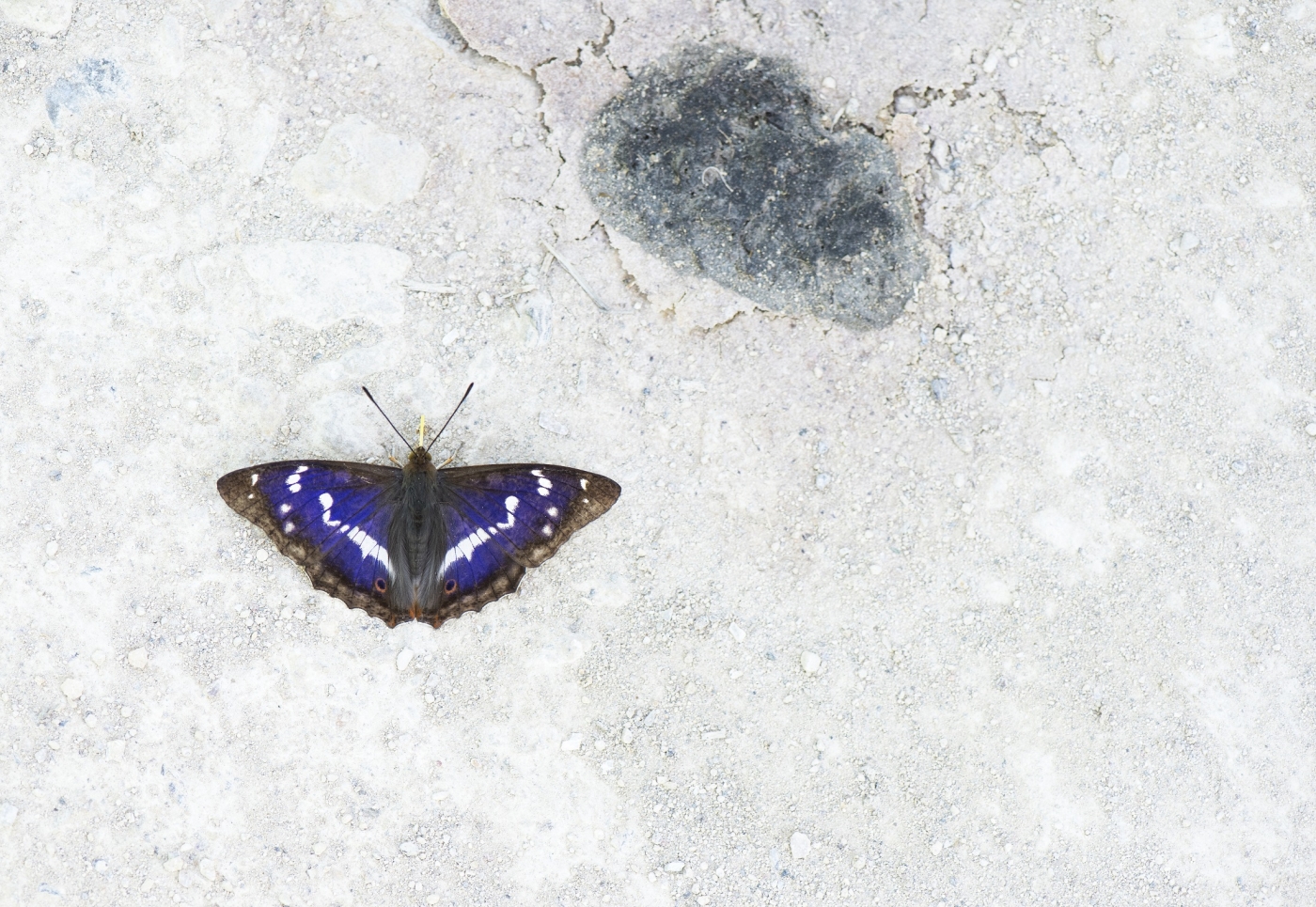
Purple Emperor butterfly
Improving the landscape at Budby
Since 2018, a three-year, three-phase project, this year funded by Severn Trent and the Miner2Major National Lottery Heritage Fund has been taking place to improve Budby’s heathland mosaic and reconnect it to the wider landscape.
Each of the projects is carefully interlinked with the others, and collectively they provide many benefits to nature, offering important new habitats, and improving the experience our visitors have of the reserve.
Phase One – ‘Better Trees’
Throughout the autumn and winter months over the past few years, timed to avoid breeding seasons, ‘Better Trees’ has been an on-going forestry project to improve the woodland and heathland structure for wildlife.
Marsh tits, spotted flycatchers and lesser spotted woodpeckers, several bat species and rare clearwing moths flourish in habitats offering decaying wood, open glades, extended wood edges and a greater range of tree species.
To achieve that, mature and character trees of ecological value – normally the nobbliest, most twisted trees – have been ‘haloed’.
Haloing involves removing younger, thinner trees and areas of scrub which can crowd trees of special interest. It is about giving them space to breathe.
Growing in open conditions creates a healthier individual tree, which is likely to live for longer and can act as a larger carbon sponge – one day becoming another of Sherwood’s ancient or veteran trees – and will certainly offer a much-improved habitat for wildlife.
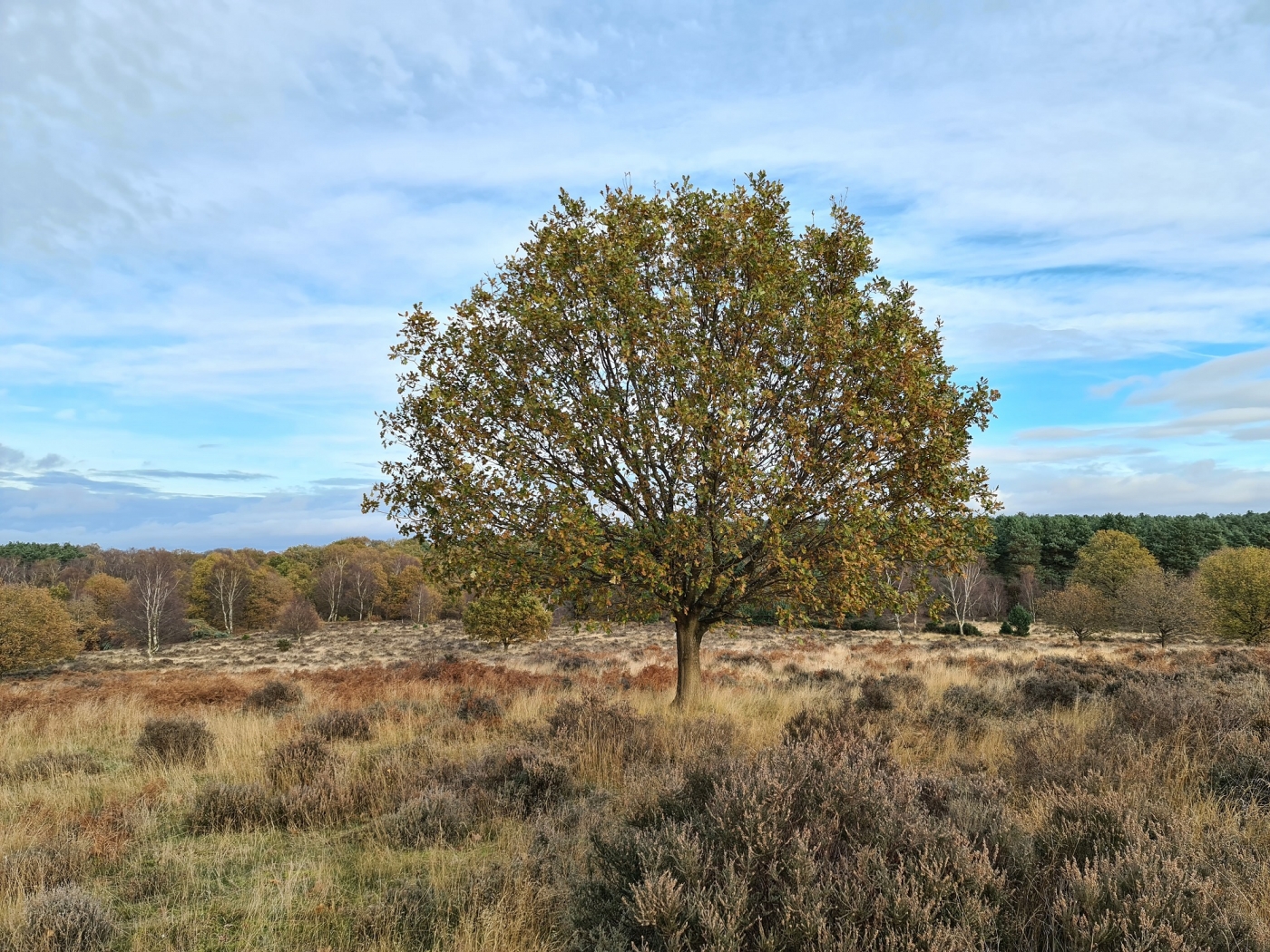
Open grown oak at Budby South Forest
Thinning creates open canopy woodland, encouraging spreading growth in the trees that are retained, as well a flourish of new seedlings and ground flora by letting more light reach the forest floor.
Providing more open heath and wood pasture improves the connectivity of the open habitats across the landscape too, which is crucial to many species of wildlife.
The availability of woodland edge habitats also increases as rides – access trackways – and glades are created by the forestry work.
The woodland edge is an important transitional zone between trees and open heath. It is usually full of scrub, areas characterised by bushes and smaller shrub trees which are bursting with insect life, providing an important foraging habitat for bats, birds and pollinators.
The removal of some trees creates new vistas for visitors and ensures open habitats remain connected, while also reducing the need for continual scrub management.
The result is that a wide age range of all tree species will be left, particularly anything which is estimated to be at least 200 years old.
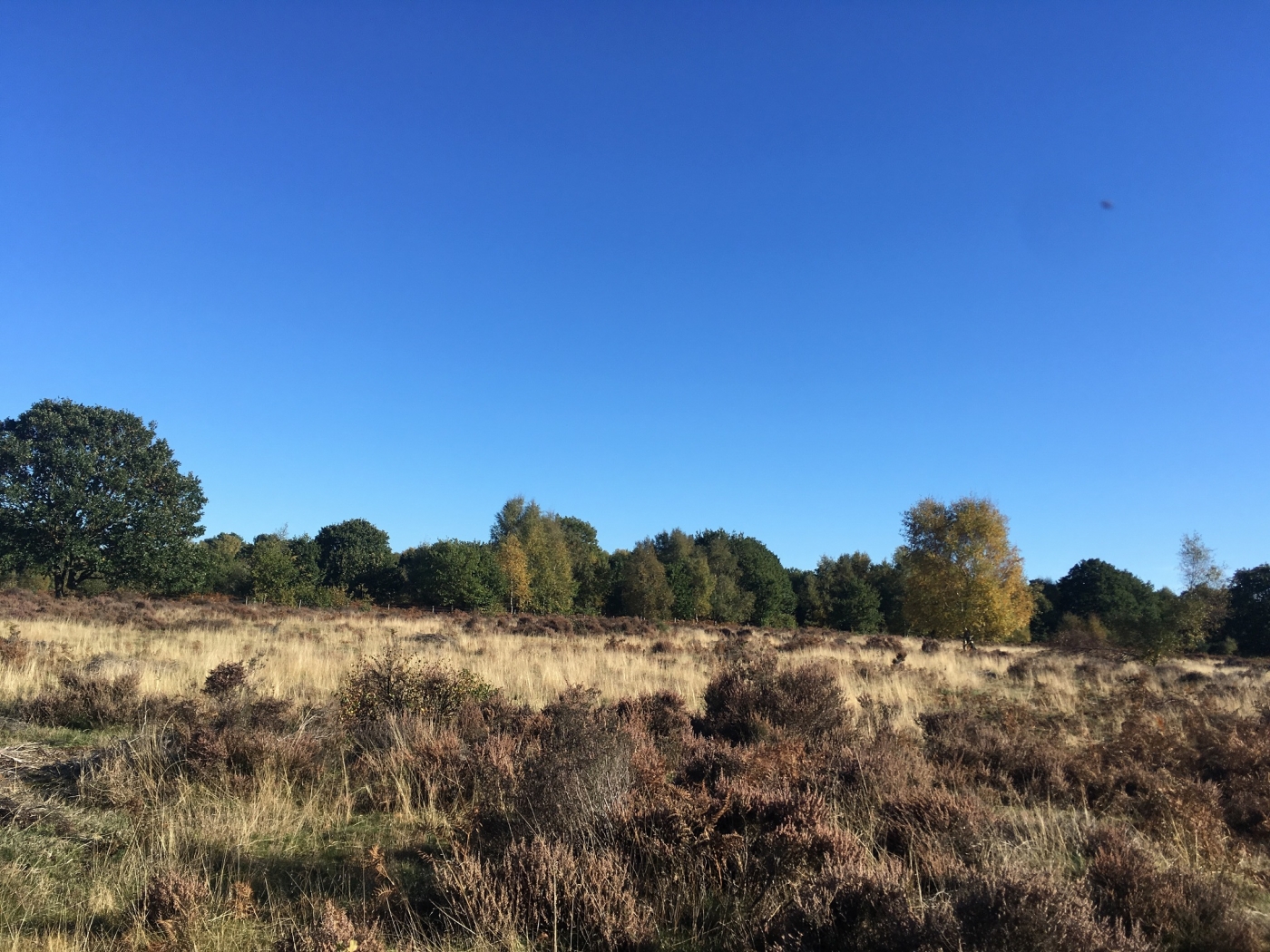
A view across Budby South Forest
Not all the removed trees are taken for timber. A few individuals will be pushed over instead and left in situ, resembling storm damaged trees
With their root plate lifted, the fallen tree creates its own bare ground and decaying wood dioramas – displaying how an unfortunate circumstance for the tree actually enables many species thrive.
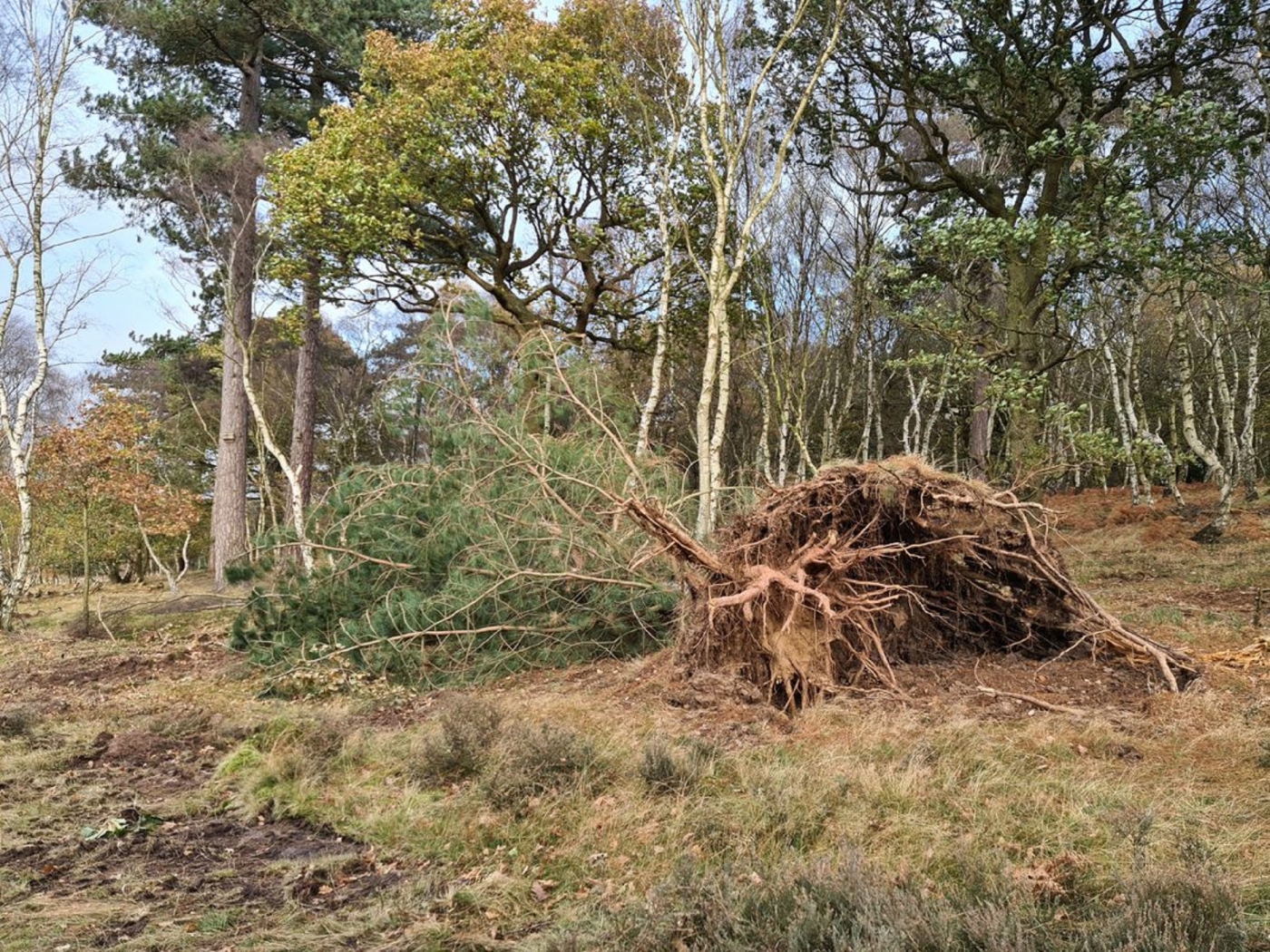
A fallen tree with an exposed root plate
With the removal of straggly plants which have been struggling to reach for light, scattered pockets of dense bushy scrub and gorse will be encouraged across the reserve, perfect for birds such as garden and willow warblers, linnets (below, left) and yellowhammers (below, right).
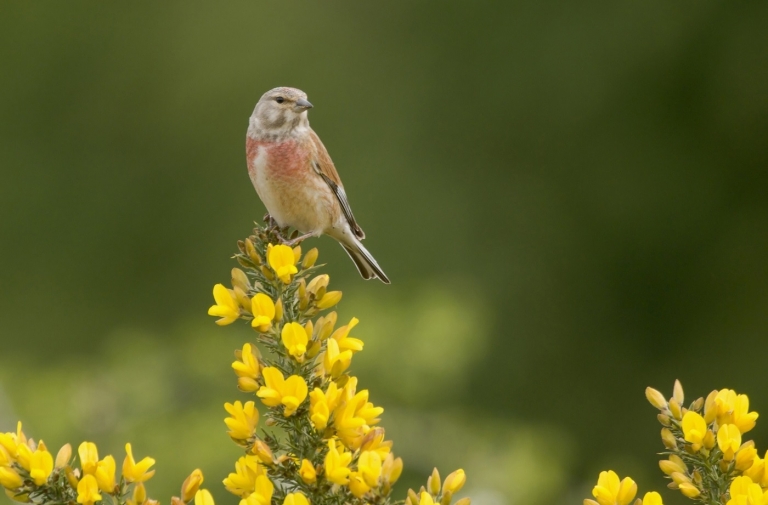
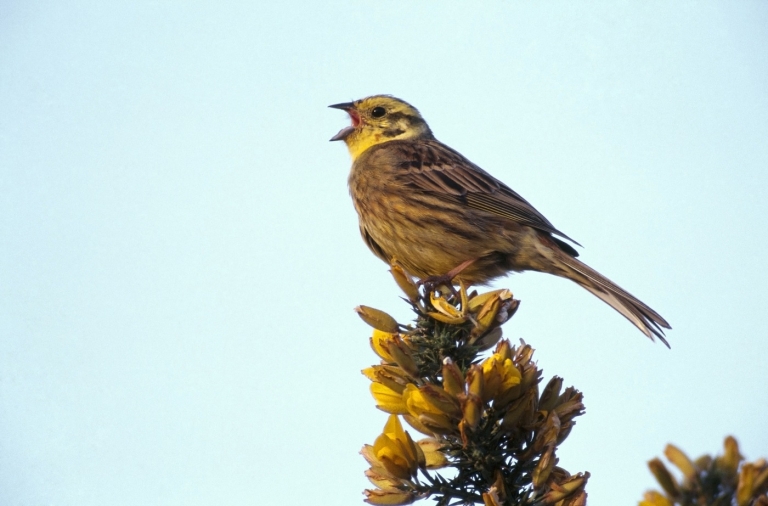
It is creating better access for humans too. Our reserve team’s vehicles can now get to more places on the healthland to conduct management work, and all visitors on foot, horseback and bicycle can enjoy sunnier and less obstructed routes around and across the reserve.
To avoid churning up some of our new sandy tracks and the wildlife within them, remember to check which paths you can access on bike and horse!
Phase Two - Baring All
Budby’s designation as a Site of Special Scientific Interest is very much about its importance as a home to a wide range invertebrate species.
Bare sandy ground is an incredibly important micro-habitat and many types of bees, wasps, beetles, ants and bugs rely on it to make their nests.
Over the past few years, the RSPB has taken on responsibility for providing around four hectares of high-quality bare ground habitat at Budby, creating sculpted path edges and installing over 100 new bare ground features out in the open heath, giving homes to rare heathland wildlife like black oil beetles and Mimesa bicolour wasps.
‘Invertebrate Amphitheatres’, ‘Black Oil Beetle Strips’, ‘Mini-Terraces’ and ‘Hibernaculum Berms’ have all been provided within the open heath mosaic.
Features such as mini cliff faces, south facing banks and water bodies have also been factored into the project, again to benefit wildlife. The needs of hibernating reptiles and mammals have also been catered for with features that offer places of refuge along the reserve.
To reopen pathways, encroaching grasses and other vegetation have been removed, and nutrient rich material has been stripped away to widen the existing tracks and expose the natural sandy substrate below.
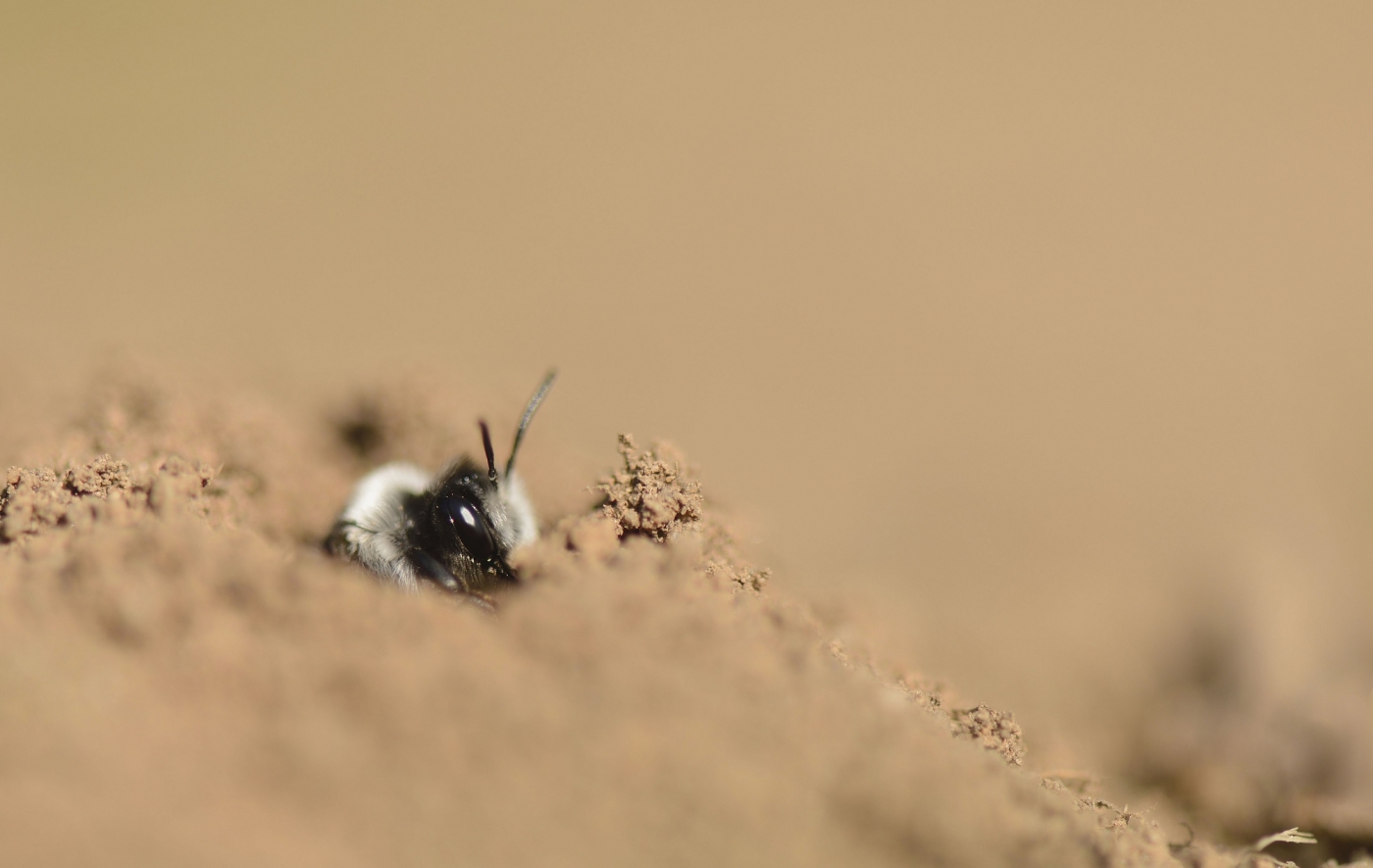
Ashy mining bee burrowing in bare sandy ground
Specialist heathland invertebrates, especially burrowing varieties, love this sandy surface, and humans are – perhaps unknowingly – helping to maintain this environment. That’s because compaction through footfall and reserve vehicle use will sustain the bare ground.
This work has taken place in the months of January and February over three years, before the main breeding season starts and following the forestry work of the ‘Better Trees’ project.
The phased approach has also ensured that wildlife can safely disperse to other parts of the heath and extensive research for archaeological features could be carried out, ensuring that the works will avoid any areas of ecological or historical importance.
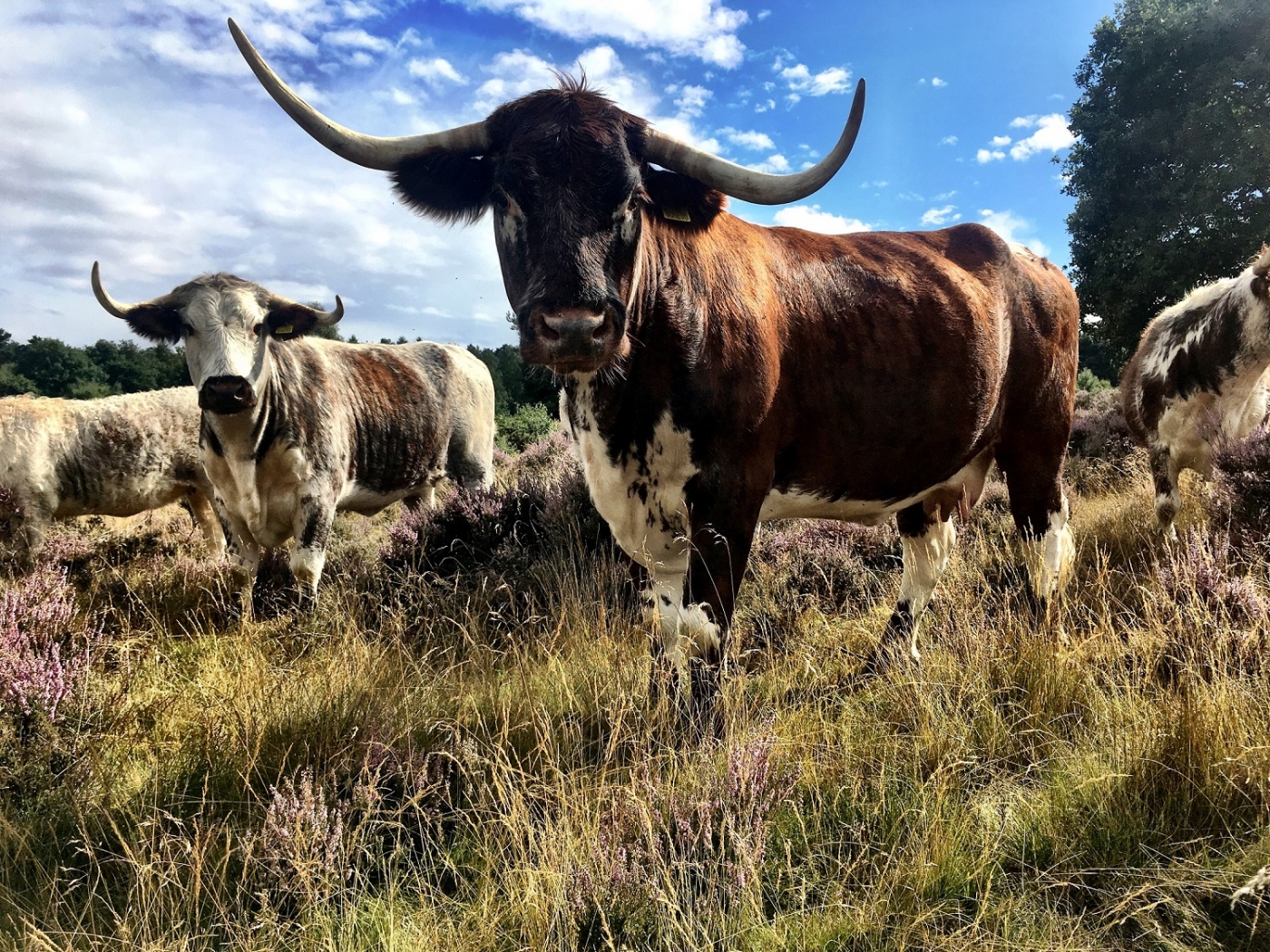
English Longhorn cattle are brought on to Budby South Forest from the Thoresby Estate
Phase three - New Browser Required
Livestock grazing is a key part of conservation management at Budby. English Longhorn cattle and Hebridean sheep on loan from Thoresby Estate regularly graze on the reserve throughout the year.
Low intensity grazing has long been identified as an integral tool for creating and maintaining a diverse vegetation structure within acid grassland and heathland. Livestock will browse grasses, bramble and sapling growth, helping to keep regrowth and scrub at bay.
Varied nibbling creates patches of longer and shorter vegetation – and dung – which is ideal for a variety species, including RSPB priority heathland birds like woodlark and nightjar, as well as invertebrates such as striped wing grasshoppers and ghost spiders.
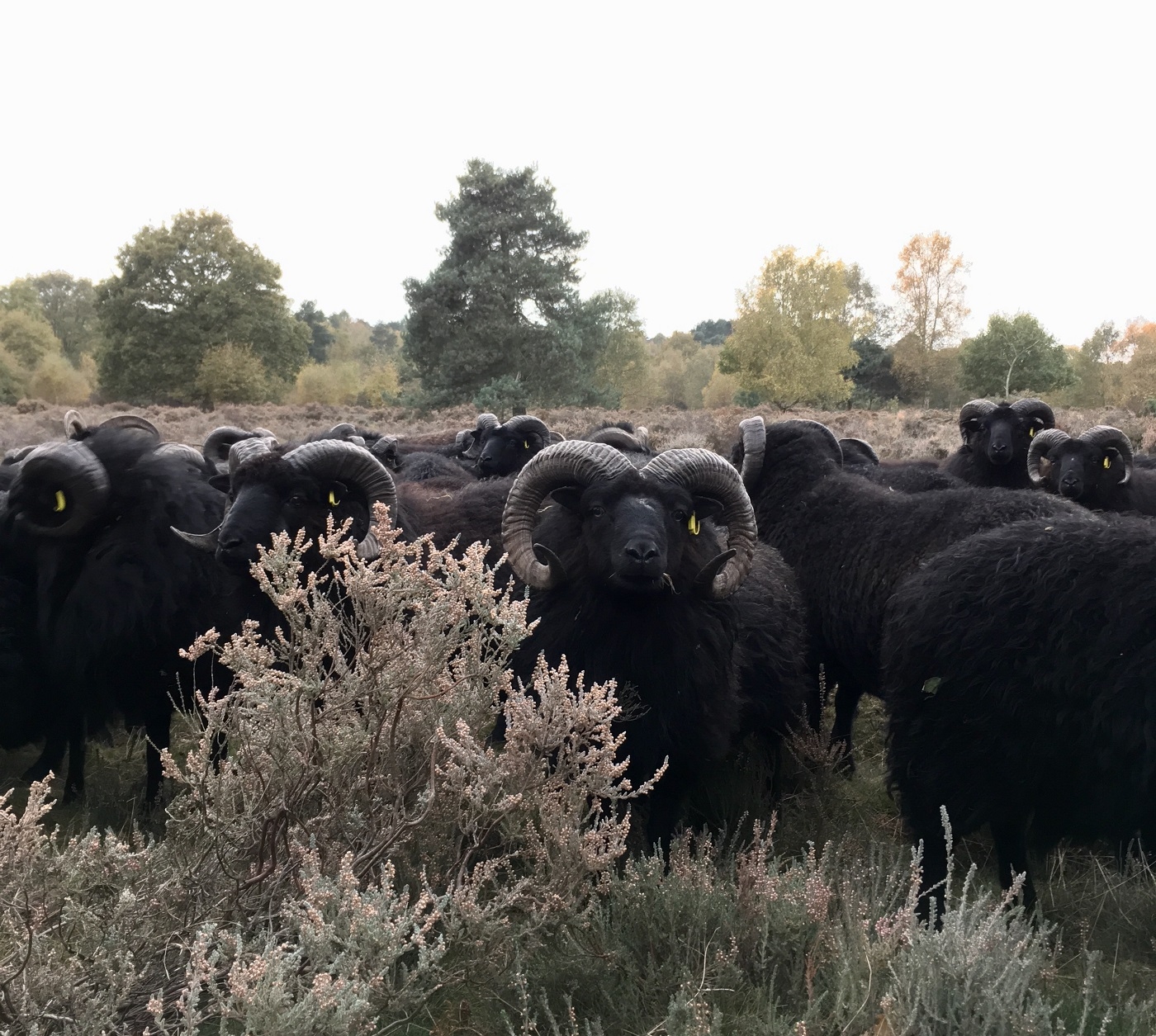
Hebridean sheep grazing at Budby
Ensuring that we can continue to effectively manage the grazing animals on Budby, old and deteriorating fencing has been removed and more robust fencing is being put in place.
This phase has also given us the opportunity to re-design access points for visitors and replace stiles and gates with all-ability ‘kissing gates’.
This improves movement across the reserve for visitors with mobility issues, but also prevents unauthorised recreational access by horses, bikes and even motorbikes, on Budby’s areas of Open Access land, reducing the risk of damage to sensitive nesting or breeding sites.
Other work at Budby
The Ministry of Defence is currently carrying out remediation work on a small piece of non-RSPB land adjacent to the reserve, restoring that area to health after several decades of use by the military, mainly as a training site.
It does mean that that Budby Lay-By off the B6034 Swinecote Road is temporarily closed to allow works vehicles to move on and off site. At this time, we do not have an estimated completion date for these works, but will provide an update as and when we we have that information from the MoD.
What happens next?
Conservation work is never finished; our landscape now requires constant intervention to keep spaces in the right condition for wildlife,
Following these large-scale pieces of ‘intervention’ work, we can focus more on the ‘maintenance management’ of the reserve because the habitat is in a better balance.
This means that we’ll be working on making sure:
- there is always the right proportion of tree and scrub cover in a mix of ages
- that the heather is vibrant and of healthy structure and not dominated by bracken and bramble
- that bare sandy ground remains open and new patches are created.
It also means that we can look to new exciting projects to make the reserve even better for people and wildlife, connecting up with other sites across the landscape.
Want to know more?
There’s so much more we can tell you about this incredible landscape at Budby and the management of the reserve. To find out more, download our Frequently Asked Questions document.
You can also visit the Budby South Forest page on the RSPB website.